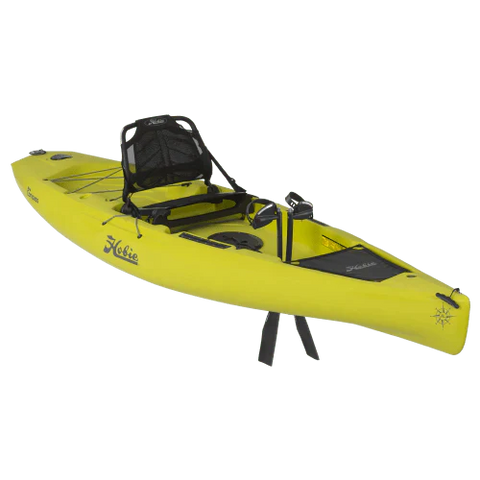Which kayak is right for me?
How do you know which kayak is THE kayak?
Selecting the right kayak can be a pivotal decision for water enthusiasts, whether you’re a seasoned paddler or a beginner looking to embark on your first adventure. With various types, sizes, and features available, finding the perfect kayak can seem like a daunting task. This guide aims to simplify the process, helping you make an informed decision that aligns with your kayaking goals. We always recommend trying as many kayaks as you can, that way you have first hand knowledge on what works best for you.
Let's dive in!
1. Know Your Purpose: Consider your intended use for the kayak. Are you looking for a vessel to navigate calm lakes, tackle rough rivers, or explore coastal waters? Different kayaks are designed for specific environments and activities. Understanding your purpose will guide you towards the right type of kayak. If you are brand new, and haven't quite figured out where you will be paddling the most- check out our list of popular kayaking spots below to begin your quest for knowledge!
Shell Island Road click for map
Paddle into the heart of the Rookery Bay Reserve on a marked canoe trail through calm mangrove creeks and back bays scattered with small mangrove islands. Keep your eyes open for dolphin and manatee as you head to the famous bird rookery island, home to hundreds of birds of all different species. Join us on our Sunset Bird Rookery Kayak Tour to learn about this amazing place or explore on your own by renting a kayak. We recommend about 2 hours at this park to paddle the entire 2-mile canoe trail at a leisurely pace. Shell Island Road Launch is located at the very end of Shell Island Road, South of US-41 off Collier Blvd. Keep your eyes open during your drive to see gophers, tortoise, birds, deer, raccoons, and maybe even a bobcat!
Capri Paddlecraft Park click for map
Explore the winding mangrove tunnels of the Rookery Bay Reserve in search of sea stars, urchins, wading birds, giant snails, tree crabs, dolphin, manatee, and more! These backwaters provide a fun paddle through some of the most beautiful mangrove tunnels in the region. Join us on our award winning Mangrove Tunnels & Mudflats tour with one of our biologist & certified naturalist guides or use our digital map to navigate the tunnels with ease. We recommend at least 2-3 hours in this park to get into all of our favorite tunnels. The Paddlecraft Park is located at the corner of Collier Blvd & Capri Blvd just North of Marco Island.
Bayview Boat Ramp click for map
Bayview Park’s 4 acres are located at the end of Danford Street off Thomasson Drive. Enjoy the million-dollar views of Naples Bay, a waterway shared by the homes in downtown Naples’ Port Royal. Follow the mangrove tunnels all the way to back side of Keewaydin Island, a beautiful spot for a quick weekend camping getaway!
Bayview Park becomes very busy on the weekends, so it is recommended for kayakers to arrive early on the weekends.
Baker Park is a beautiful 15-acre park located on the Gordon River, across the street from the Naples Dog Park at 100 Riverside Circle. The park is connected to the Greenway with the Blair Foundation bridge that crosses the Gordon River. The kayak launch puts you directly on the Gordon River, and allows you to paddle behind the zoo and the conservancy. If you are lucky, you may even get to listen to the monkeys and the lions as they call out!
2. Types of Kayaks:
a. Sit-On-Top: Ideal for beginners and warm weather, these kayaks are stable and easy to enter and exit.
Examples:


b. Sit-Inside: Great for colder climates, these kayaks provide better protection from the elements.


c. Touring Kayaks: Designed for long-distance paddling, these kayaks are efficient and have ample storage space.

d. Whitewater Kayaks: Compact and maneuverable, these are built for navigating fast-flowing rivers and rapids.
e. Fishing Kayaks: Equipped with fishing-friendly features, these kayaks are designed for anglers.

3. Consider Kayak Size: The size of the kayak is crucial for stability and maneuverability. Longer kayaks provide better speed and tracking, while shorter ones are more maneuverable. Consider the length and width based on your body size, skill level, and intended use. The other important thing to consider with size, is your storage options. Will you be storing your kayak on a dock outside? In the garage? On the beach?
4. Weight Capacity: Ensure that the kayak can handle your weight along with any gear or accessories you plan to bring. Exceeding the weight capacity can affect stability and performance. For instance, if your goal is to be the next great National Geographic Photographer on the water, you may want to consider a fishing kayak for the ability to hold a large amount of gear.
5. Kayak Materials: Kayaks are made from various materials, each with its own set of pros and cons. Common materials include polyethylene (affordable and durable), fiberglass (lightweight and efficient), and composite materials (high-performance but expensive).
6. Comfort and Features: Check the comfort features like adjustable footrests, padded seats, and ergonomic designs. Additionally, explore features like storage compartments, cup holders, and compatibility with accessories such as kayak racks and fishing gear. The great thing about purchasing from an outfitters, such as Naples Outfitters, is that you get expert knowledge and can demo any kayak before you buy!
Choosing the right kayak is a balance between your preferences, intended use, and the kayak’s design. By understanding your needs and considering the key factors outlined in this guide, you’ll be well-equipped to navigate the vast options and find the perfect kayak for your adventures on the water. Happy paddling!

